by KrackMaster
LOCK1: Medeco Locks
It has come to my attention that you lockpickers out there don’t know how to pick those high-security locks by Medeco. Those locks are patented until the year 1995 I believe and can cost up to $75 to replace because of this. Anyway, I have known a way to pick these locks for awhile now and I thought I would share it with you.
First of all you all must share some sort of idea on how locks work. With this information you will understand how the Medeco lock works. If you do not have this understanding I would prefer you read other articles on lockpicking before you read this because it will be somewhat difficult to understand. I will try to make this as simple and plain as I can because I know how dfficult it is to pick locks. BTW, read my previous file called “Locksmithing” to learn about locks. Now for the good stuff…
These types of locks are found on most condominiums, office buildings, etc that require a great deal of security. The lock is sometimes referred to as an angular pin tumbler lock simply because of how the lock works. It is a pin tumbler lock with 6 or 7 pins. Instead of the cuts in the key being on a horizontal plane, they are cut at an angle. Medeco did this to prevent any type of foreign object such as picks from entering the keyhole since it is very tight and resticted.
In order to pick this lock, you must know how to use the “racking” technique. practice on regular pin tumblers to get an idea and the feel for this. Anyway, the pick used for this type of lock is the standard diamond pick. However, one modificaton is necessary to make this pick effective. The tip of the pick must be slightly twisted to a 15 degee angle in order to pick any type of Medeco (or deco looking) locks. To twist the diamond pick’s tip, use a propane torch to heat the tip for about 20-30 seconds. Wait until it turns blue. With a pair of pliers, gently twist the tip 15 degrees. It may lose some of its temper when you pick and too much stress may break the tip of completely. Afer it has cooled, carefully file it to a wedge-like shape, keeping the angle even. If it still can’t fit into the lock, try grinding off the bottom of the pick’s shaft along its whole length until it slides in with little effort.
If you do not have a pick to use, you can make them from a steak knife (draw the design on it, use a jigsaw to cut it out, and file it down). The material of the diamond picks that I have is called blue steel. I can’t find any of those in my area in hobby shops. I had to order them thruogh a catalog such as “Delta Press” or “Soldier of Fortune.”
Okay, now that you have made the pick, you must make a tension wrench especially made for this type of lockpicking. When picking Medeco locks, play with the tension is very important. This is why a new tension wrech is necessary. Sure, you could use a stanard tension wrench but the feel and the torque would not be accurate and consistent so you would have a very difficult time picking this lock.
To make this tension wrench, which is sometimes called a feathertouch or spring tension wrench, you must first get a spring. You know the big ones that are found in the otto of the drapes in a hotel, motel, lobby, etc. They are about 5 or so inches long and the hood down the cords that open and close the curtains of a large window. You need to get one of those or something very similiar to it. You then have to do someting to make it very small and thin. One of the spring’s ends is pulled out with a pair of pliers. It is then bent back in and shaped like half of a horsetrack. Ths is where it is put into the keyhole. You would also need to shape it and file it down so that it will fit into the lock. You would use this like any other tension wrench but the feel will be much more sensitive. Practice on other locks to get the feel for it before attempting to pick the Medeco. Have fun…
LOCK II: Puzzle Locks
Some residential and most business doors use these puzzle locks that have 4 or 5 numbers which must be pressed in sequence in order to open the door. These devices are sometimes called push-button locks.
Here is the tehnique that I’ve used to find the combinations.
- Turn the knob and push each button. The button with the most resistance is the first combination number.
- Release the knob and press that button Now search for the second number by turning the knob again and pushing each button.
- Release the knob and press the button that had the most resistance.
- Repeat until all the numbers are found.
Tips to remember: Only one number is used once. There will be only 4 or 5 digit combinations out there. Listen for the clicks when you press the buton, some give the combo away.
LOCK III: Push Button Combination Locks
These locks are the small ones that have 10 buttons on the face of the lock. They look like the Master combination locks except that they are rectangular — not round. The combination number for these types of locks will generally be 4 digits (I havn’t come aross any of these locks with more than 4 digits). Each number is used only once. The numbers must be pushed in sequnce. For example, if the number is 1-3-5-9, you have to push the butotns in that sequence not just any nmber that contains the 4 digits like 3-9-1-5.
These locks are soooooo easy to open it’s ridiculous!! I’ve known how to open this when it first came out and I was shocked to find out how easy it is to open it and and even more shocked to find that really no one knew how to open them.
With 10 numbers and a 4-digit combnation, you have a 1 in 10,000 chance of getting it. Let’s bring that down to 256. First, push out all the buttons. Next, pull the shackle up and down and watch the buttons. See how many of these actualy move. There should be only 4. These are the numbers to the combination. You see, inside the lock the buttons are not connected to the locking mechanism except for the 4 buttons used in the combination. Okay, now you have to guess. I would make a chart to keep track of what digits I used so that way you won’t be wasting your time pressing the same buttons twice or more.
Here is a hint: On some locks, you will hear and feel a click on the shackle when you press the right button. In other words, then you narrow your choice to 4 numbers, you don’t have any idea which is first. When you press a button and it doesn’t make a sound, push it back out and try another one again. When you find it, move on to the next digit and so forth. It’s really very easy. It has only taken about 10 minutes or less to open one of these. A few have taken less than 3 minutes!
Well, that’s it for now. I’ll try to stay on top of any more locks that come out and keep you informed about them. Just remember that there is no lock out there that you can’t open. It just takes a little common sense and a lot of ingenuity! Not to mention practice, practice, practice!!! I have opened nearly every type of lock out there and have made so many lock-pick tools you wouldn’t believe. If I had to carry them all, they would probably fill a backpack! The tools that I always carry with me are my tension wrench and diamond pick. They will open almost all of the pin tumbler locks you come acros including some vehicle locks. I will be writng a file about eletronic locks that are out there sometime in the future. It involves building a random sound generator for one type of lock and an electromagntic field producer for another. Hopefully if you people out there are interested in this, I will be writing it sooner. If not, I’ll get to it when I’m not too busy. If you want more information about this or any topic in my other file, just let me know.
DISCLAIMER: I do not condone this type of activity to anyone. This file is merely for informational purposes ony! Like another gentleman (lockpicking artist said and I will borrow it hee: I am just a gun seller — not the one that pulls he trigger. I have been locked out of the house at some point in time and have used these skills to let myself back inside. I do not break into other people’s homes or cars to steal or wreak havoc in any form. Also remember that posession of lock pick tools is a felony in most states. Only journeymen, professionals or apprentices with proper ID can obtain and legally carry lock pick tools. Once a pick is inserted into a lock, it is considered “breaking and entering” and a FELONY subject to prosecution! Be careful out there…
Books on Picking Locks
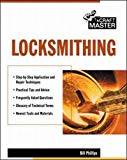
Locksmithing
Top security pro Bill Phillips has put together a learn-as-you-go guide packed with everything you need to start off a lucrative career as a locksmith. From cutting keys to installing closed circuit television systems, Locksmithing prepares you to work with nearly every type of locking device used in residential, automotive, commercial, and electronic security devices. Step-by-step instructions, illustrations, charts and checklists, and plenty of the authorAEs own trade secrets, will have you picking open locks…impressioning keys… opening any car door…installing and servicing electric strikes, electromagnetic locks and emergency exit door devices in no time at all. What’s more, this is the only locksmithing book to keep you on top of high-tech CCTV, access control systems, and systems integration, areas that you’ll need to understand and work with to stay competitive. You even get valuable tips for getting hired or starting up your own business, licensing information and a sample certification exam, plus scores of handy references from trade journals to Websites, from suppliers to trade associations.
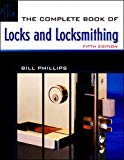
The Complete Book of Locks and Locksmithing
The Complete Book of Locks and Locksmithing has been the best-selling, standard reference in the field since 1976. It is accessible to students, apprentices and professionals alike. No other book has as much useful, practical and comprehensive information on locksmithing. Bill Phillips provides easy to understand information on all the basics of locksmithing and on the advanced techniques a locksmith needs to survive in a competitive market. It covers everything from master keying and lock picking, to auto locks, lockmaking, and servicing safes. Phillips also provides 3 sample tests to prepare for Registered Professional Locksmith certification exams.

Modern High-Security Locks: How To Open Them
Master locksmith Steven Hampton, author of the best-selling Secrets of Lock Picking, takes the art of picking locks one step further with Modern High-Security Locks. Here, he collects some of today’s most popular pick-resistant locks and sets out to see which ones hold up to their claims. However complex a lock gets, it must be durable, dependable and user-friendly. It has to be tough enough to endure physical attack, but it can’t be machined too tight or it will jam up with just a breath of dust. It must be simple and easy to lock and unlock with its key, or the customer will not pay the higher price for it. It is this delicate balance between security and utility that allows the locksmith to open this new generation of locks. Hampton shows locksmiths how each lock is picked and how long it will take. He details the tools of the trade and includes patterns and instructions for making your own picks and tension wrenches. He even includes ancient Tibetan Buddhist tantric visualization exercises to help locksmiths learn to “see” the inner workings of the lock within the mind’s eye. Veteran locksmiths or those new to the trade will find Hampton’s latest book an invaluable sourcebook.
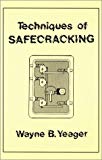
Techniques of Safecracking
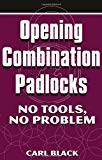
Opening Combination Padlocks: No Tools, No Problem
It is incredibly easy to forget the combination to padlocks on your own tool shed, gym locker or anyplace else these common locks are found. This handy guide teaches one thing: how to open a padlock whose combination is lost. Dissatisfied with books that showed methods that didn’t allow entry into all locks or made it difficult to always accurately find the first or third number, usually the main basis for their technique, author Carl Black devised a foolproof system that allows quick entry into all combination padlocks in minutes without any guesswork or tools. He explains how it works with clear instructions and illustrations and gives problem-solving tips for difficult locks.

How To Open Locks Without Keys Or Picks (Locksmithing)
Many leading locksmiths feel that opening locked doors by means other than picking or key fitting is a necessary part of the locksmith’s knowledge. Since no two jobs present the same problem to a master locksmith, it is a credit to his ability for him to be familiar with all the ways of doing his work.
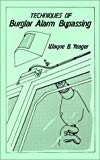
Techniques of Burglar Alarm Bypassing
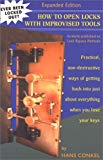
How To Open Locks With Improvised Tools: Practical, Non-Destructive Ways Of Getting Back Into Just About Everything When You Lose Your Keys
Practical, real-world solutions to lockouts. Learn to open doorknobs, deadbolts, car doors, padlocks, handcuffs, et cetera. This book sold out as “Lock Bypass Methods,” and has proven to be the best manual on keyless entry available. Since your resources are usually on the other side of the door when you’re locked out, it shows how to improvise tools from garbage and common, everday items. Multiple entrance options are provided in case of stubborn doors or limited materials. Thousands of people have successfully opened doors using techniques they learned in “Lock Bypass Methods.” This expanded edition has more illustrations and new techniques.
This book will not waste your time trying to explain how to pick sidebar locks, or activate magnetic-stripe readers without a key card. It DOES explain how to open doors protected by these locks, simply and without damage, through bypass techniques. A latch holds something shut, and a lock is a gateway to that latch. This book teaches ways to climb over the fence and ignore the gate. You will learn how to pick locks, a skill that works 60-70% of the time. More importantly, you will learn methods to trip actuators, move linkage rods, take advantage of mechanical design flaws, exploit tolerances in a lock’s setting, and other practical means of entry.
The book’s focus is on problem solving, not presenting methods that are too difficult to accomplish. Many other books in this field suffer from too much theory and too little delivery. If it doesn’t work, it isn’t in here. This book is designed to give the reader skills that open locks without keys or damage. It is not a whitewashed or glossed-over set of instructions that leave a reader feeling as if failure is his fault and he just hasn’t developed some special esoteric talent. Difficulties encountered in opening methods are identified, explained, and solutions are given to cope with them. The book is clearly written and illustrated, and covers problem solving, how locks work, picking, bypassing, and tool making. If you are interested in opening locks without keys, you should have this book.
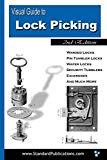
Visual Guide to Lock Picking
This is the definitive guide for learning the art of lock picking. Inside you will discover the secrets of the trade. By reading this book, practicing, and applying the methods introduced, you can successfully become a master at picking all the common locks of today.
This book makes it easy and gives you the edge to quickly learn what it takes others years to gather. This book is a valuable addition to any collection and will open doors for you.
Not only does this book cover what tools and techniques are needed to pick most common locks, but it also goes through what to do step-by-step; and actually teaches you how to do it. It explains what all of the tools are and for what they are used. What really sets this book far above the competition, however, is the vast assortment of illustrations that make everything easy to understand. This really is a visual guide containing over 60 pages filled with diagrams and drawings that will instantly show you how locks work, and exactly what to do to bypass them. You can start learning today!
This book makes learning the art of lock picking fun and easy. You don’t have to waste your time guessing how it’s done, reading some amateur’s theories, or trying to learn from the movies. (They always get it wrong). Now, you can get accurate information that the professionals use. Their secrets have finally been revealed.
Inside, you will find sections about warded locks, pin tumblers, wafer tumblers, and more. These are the locks found on most residential and commercial doors, cars, padlocks, desks, filing cabinets, safes, equipment, vending machines, bike locks, etc… Each section includes a detailed and easy to understand explanation as to how that type of lock works. This book even outlines several exercises you can perform in order to improve your lock picking skills. You’ll be picking every lock in your house in no time.
Now, you can understand the technology that has kept thieves at bay for centuries. Even in the time of antiquity, within the halls of the great pyramids, tomb raiders found their untold riches behind surprisingly sophisticated locks. Today’s locks inherit these same principle designs. We give you the keys to their secrets.
How many times have you or someone you know been locked out? Now, you don’t have to be helpless in that situation while you wait and rely on some locksmith who is going to charge you a lot of money to do what you can do yourself. You don’t have to be a victim of your circumstances. The next time someone forgets their keys, you can be confident with the knowledge that you can help yourself and your friends and save a lot of money in the process.
This is the authoritative guide on lock picking. Even if you already know how to pick some locks, this book covers tips & techniques that you can use. This book is perfect for existing locksmiths, auto repossessors, and car dealers.
Whether you are interested in becoming a locksmith, need to know how to bypass security locks for your job in law enforcement or emergency services, interested in lock picking as a hobby, just want to be prepared in an emergency, or for whatever reason, this book will get you started off right!

Pick Guns: Lock Picking For Spies, Cops, And Locksmiths
This book tells how pick guns work and how to use them and traces their development from their inception to the revolutionary devices of today. Included are the original patents by Epstein, Segal, Moore, Cooke and others, as well as info on pick guns used by the FBI and intelligence agencies. Photos depict improvised devices made out of coat hangers and clothespins. For academic study only.
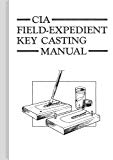
CIA Field-Expedient Key Casting Manual
Learn how the CIA agent gets behind locked doors. This revised reprint of the classic CIA Key Casting Instruction Manual will teach you how to make a duplicate key when you can keep the original for only a short time. A step-by-step, self-checking guide, it gives you all the know-how you need to create accurate keys to gain access to off-limits areas with no special equipment.
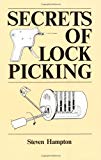
Secrets Of Lock Picking
Master locksmith Steven Hampton reveals here the tricks and tools for bypassing keyed and combination locks from pin tumbler locks, mushroom and spool pin tumbler locks, wafer tumbler locks, warded locks and disk tumbler locks to tubular cylinder locks, magnetic locks, door locks, padlocks and automobile locks. Find the key to “seeing” into every lock and discovering its simplicity.
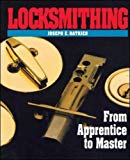
Locksmithing
This is a complete overview and practical guide to the locksmith profession. It begins with an introduction by Steve Lasky, editor and vice-president of publishing for Security Technician Magazine and Locksmith Ledger International. In Part 1, readers learn about the business, including how to train for it, become employed, find a niche, and advance toward higher certification. Part 2 is a skill-building reference focusing on techniques and technologies in this fast-growing and ever-changing trade. Coverage includes how to set up a small, one-person shop, outfit the business, masterkey locks, perform emergency services, and use locksmithing software. Appendices provide up-to-date reference to locksmithing terms, training, associations, suppliers, and publications.
Lock Picking Videos

Visual Guide to Lock Picking Video
The Visual Guide to Lock Picking is the definitive guide for learning the art of picking locks. This video explains several types of locks and picking techniques. Modern computer graphics and animations allow for cutaway views that were never before possible. This video not only makes lock picking possible, but clearly shows you how, so that you can get started today.
Quickly learn the secrets of the trade from this video’s concise, yet informative style. By practicing and applying the methods introduced here, it is possible to master the picking of most modern locks. The Visual Guide to Lock Picking introduces warded locks, pin tumblers, wafer tumblers, master locks, even some high security pins. It dissects the locks, showing every moving part, making it easy to see how they work. Step-by-step instructions are given for picking each type of lock. You will be lead through the entire process, introducing the necessary tools and covering several techniques leading you to that satisfying click as the lock springs open!
